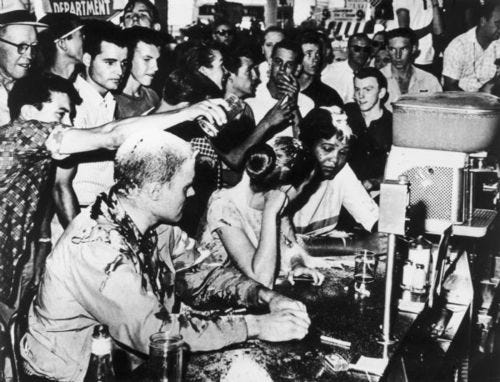Correction: The Greensboro Sit-In Counter Was Never at the Smithsonian's National Museum of African American History & Culture
There has been a lot of concern about the recent actions of the Trump administration, and understandably so. The administration’s Executive Order 14253, titled "Restoring Truth and Sanity to American History," has sparked a great deal of worry. Many fear the erasure or distortion of critical historical events, including the Greensboro Sit-In. However, it is crucial that we remain accurate and vigilant in our reporting. In this case, the reporting on the removal of the Greensboro Sit-In counter was mistaken.
While the order, signed on March 27, 2025, mandates the elimination of what it deems "improper ideology" from federal institutions, it is important to clarify that the Greensboro Sit-In counter was never on display at the Smithsonian's National Museum of African American History and Culture (NMAAHC), and it is not being removed. What IS at stake, however, is the broader effort to reshape how American history is represented in federal institutions, classrooms, and national memory.
The Greensboro Sit-In, led by four Black college students—Ezell Blair Jr., David Richmond, Franklin McCain, and Joseph McNeil—on February 1, 1960, was a landmark act of peaceful resistance. The students sat at a "whites-only" lunch counter in Greensboro, North Carolina.
They were met with violent hostility, including verbal abuse and physical intimidation, as white customers poured food and drinks on them and spat in their faces.
It looked similar to this 1963 incident at a Woolworth’s lunch counter in Jackson, Mississippi:
Despite this violence, the students remained nonviolent, and their bravery helped catalyze the broader sit-in movement, challenging segregation in public spaces.
While the actual lunch counter from the Greensboro Sit-In is not displayed at the NMAAHC, it now resides in three places where its legacy lives on:
The International Civil Rights Center & Museum in Greensboro, North Carolina, occupies the original site of the Woolworth’s store, where visitors can see a restored portion of the lunch counter and learn about this pivotal moment in history.
A portion of the counter is also on display at the Smithsonian’s National Museum of American History in Washington, D.C. Here is a link to images from the exhibit.
The Greensboro History Museum also houses a six-seat section of the original lunch counter.
Let us take this time to remember this crucial moment in American history. The bravery of these students helped pave the way for a broader movement that changed the course of civil rights in the U.S. Their story is not simply part of Black history—it is central to the shared history of all Americans.
Let’s keep this history alive and honor the sacrifices made by those who fought against injustice. I highly recommend watching the PBS documentary “Eyes on the Prize” to learn more about this pivotal moment in the American civil rights movement.
You can stream it on Max and Amazon Prime.
In conclusion, in times of uncertainty, it's crucial that we stay committed to accurate reporting. This ensures that the truth of our history—like the story of the Greensboro Sit-In—remains intact for future generations.






